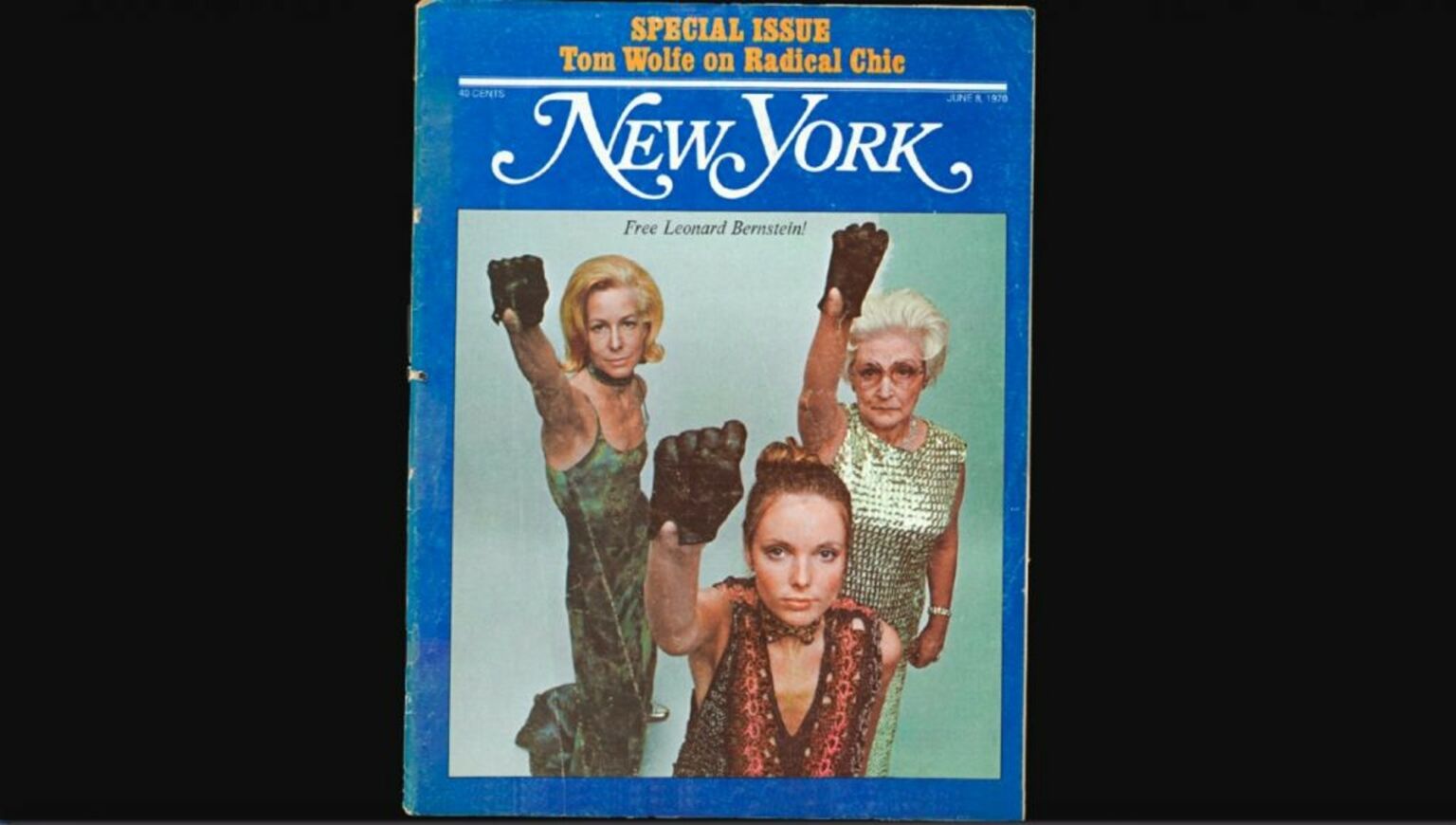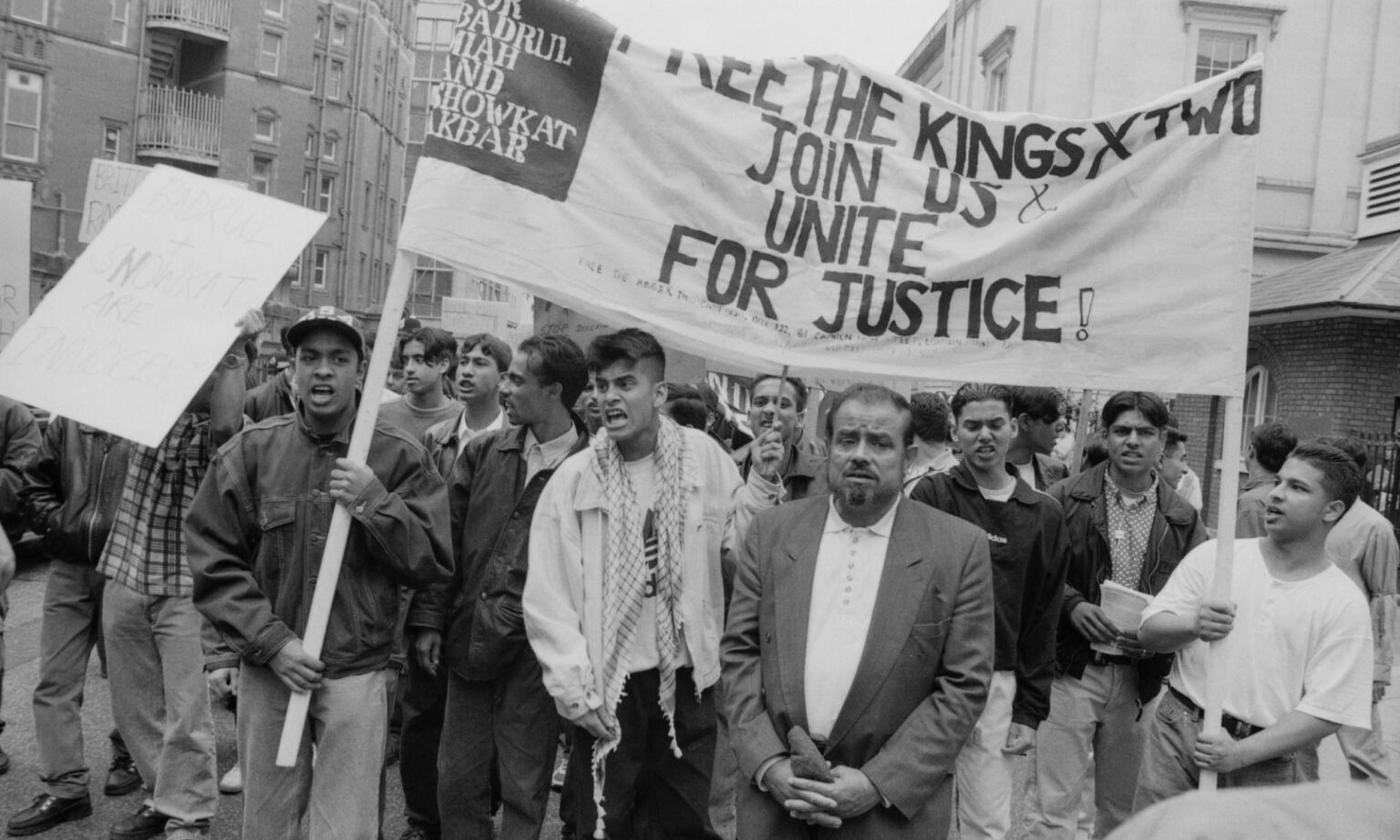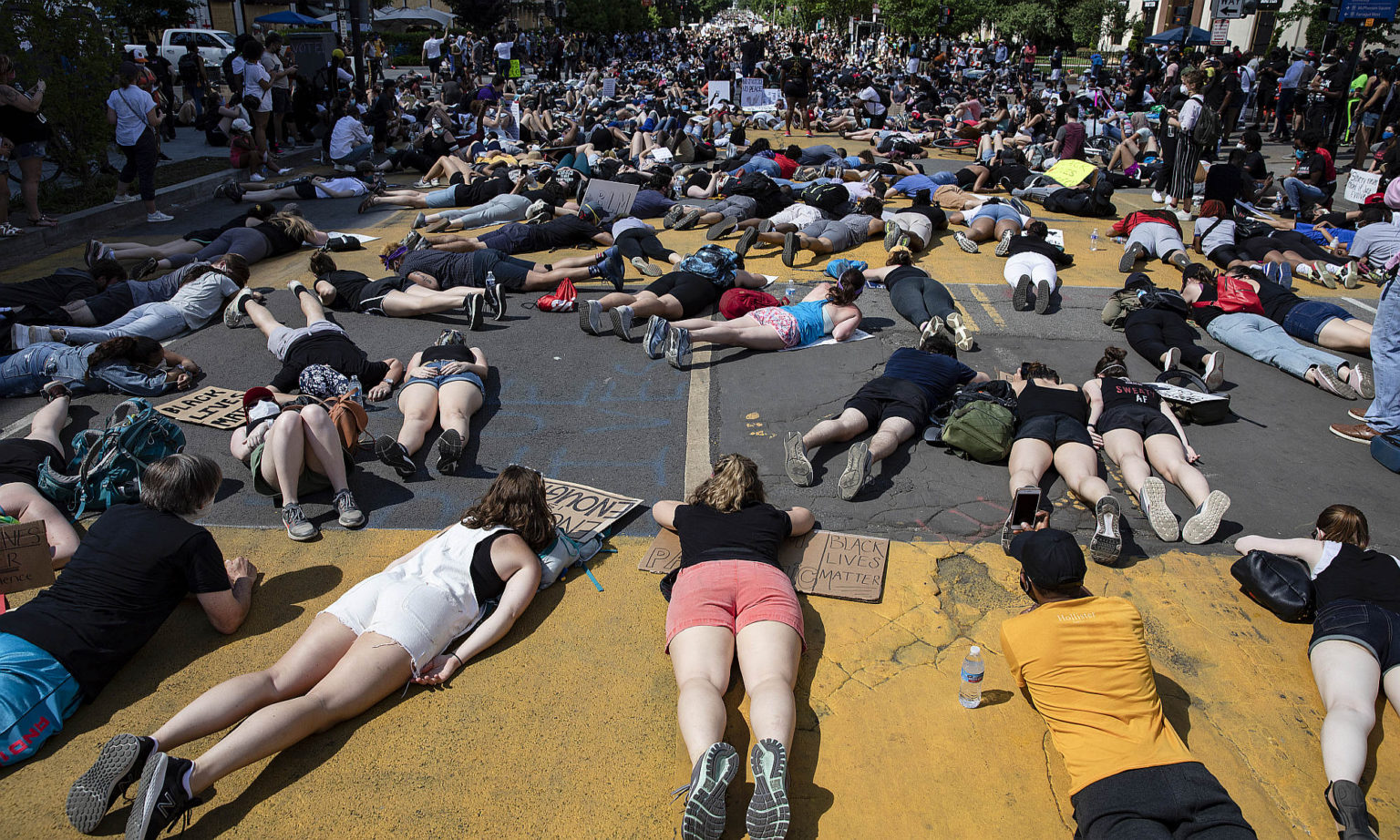LONG-READ
‘Radical chic’ and the left’s problem with race
White, middle-class left-wingers are still in thrall to age-old prejudices.
When it comes to race and the left – certainly the wealthy white left, definitely the middle-class left – it is as if left-wingers have not progressed since being unceremoniously exposed as a type by Tom Wolfe, in his mammoth essay, ‘Radical Chic’, over half a century ago. Other writers also had their number, including black authors James Baldwin and Ralph Ellison. The event Wolfe documents may not be familiar to a rising generation charting similar territory as chic revolutionaries on social media. It’s therefore worth providing a summary here. In the season of radical chic, as Wolfe refers to it, super-rich celebrities and socialites were indulging in a political cocktail of nostalgie de la boue and noblesse oblige, by staging fundraising parties – where sumptuous hors d’oeuvre were served – at New York duplexes on Park Avenue. Their pet causes were those raised by ethnic groups who were politicised – often rightfully so – by grievances that needed airing, axes that needed grinding.
Wolfe was present at a gathering hosted by hip maestro Leonard Bernstein in January 1970 to highlight the plight of the Black Panthers, some of whom were present, tucking into meatballs petites au Coq Hardi being dished out by white servants. The wealthy, wide-eyed guests were in awe; they had never met a Black Panther before. (Arguably, some of them had never met a black person before, apart from those handing them meatballs petites au Coq Hardi at Park Avenue parties before black power and white servants were de rigueur.) They were smitten: the Cuban shades, Shaft leathers and Afro Sheen. The lithe Panther wives could have stepped from the pages of Vogue which, as Wolfe points out, was in on the act with a ‘Soul Food’ column listing the ingredients for sweet-potato pone, and the interview in which an inane socialite excitedly announced, ‘the sophistication of the baby blacks made me rethink my attitudes’.
Wolfe’s essay, for New York magazine, is brutal and forensic in exposing the crass hypocrisy on display. (Wolfe recalled: ‘The English, particularly, milked the story for all it was worth and seemed to derive one of the great cackles of the year from it.’) Bernstein was ostracised by some, ridiculed by many more, and, along with other rich Jewish radicals, distanced himself from the Panthers when it transpired their anti-Semitism was as virulent as their animosity towards ‘the Man’, the bourgeoisie and goys in general.
Well, that was 1970. More than half a century on, the left’s take on race, over there and over here, is still at the stage of those socialites waxing lyrical about ‘baby blacks’. In fact, it’s worse. For the left, black men and women continue to fall into one of two categories, often both: the poor victim oppressed by Big Bad Whitey; and the soulful exotic, with a natural sense of rhythm and a covetable spicy diet. It’s the contemporary equivalent of casting them as the slave or the maid. It’s old. It’s tired. But it never stops. Society has moved on in relation to race, but the white radicals who campaign for change have not.

In the decades since Wolfe’s essay was published racism has diminished rapidly, while laws introduced to tackle it have increased apace. A lucrative cottage industry has become a booming global business. Think of the unemployment if ‘racism’ were truly eradicated, particularly in the public sector. What would become of this massive protection racket that has capitalists, technocrats and mediacrats fearful the mob will come for them if they don’t pay up, by way of fulfilling diversity quotas and taking the knee? These days everyone is on the bus, and no one has to give up their seat.
Yet the goalposts are forever shifting because with racism, unlike with the end of, say, segregation, there is no finish line. The remit of the term is redefined as often as the words to describe ethnic minorities are rewritten. In ‘Radical Chic’, Wolfe refers to the racial etiquette that plagues ‘cultivated persons’ on the left: ‘one says blacks, of course. It is the only word, currently, that implicitly shows one’s awareness of the dignity of the black race.’ This went the way of ‘coloured’ for a while, to be surpassed by BAME and then POC, to fully represent the diversity and solidarity of the ethnic demographic. But these are no longer au courant, such is the moveable feast that is racial etiquette. ‘Black’ has now struck out on its own again, bigger and bolder than before, with the distinguishing feature of an official capital B.
The meaning of racism has come a long way since solely being identified with evidential prejudice and discrimination. It has covered the waterfront: institutionalised racism, unwitting prejudice, systemic racism. It landed on white privilege, which is pretty much where we are now according to figures in the civil service and elsewhere. Everything from art galleries to rambling and knitting circles are racist, even though there are no Klansmen or water cannons preventing anyone from entering or participating. But actual evidence is not needed as proof when projection will suffice. Like Meghan Markle’s version of the truth, it is entirely subjective.
‘If you believe that everyone should play by the same rules and be judged by the same standards’, Thomas Sowell has said, ‘that would have gotten you labelled a radical 50 years ago, a liberal 25 years ago, and a racist today’. A more positive development in that time is that the race debate no longer divides people along racial lines. On both sides of the divide created by identity politics, there is a crowd of diverse colours, faiths and affiliations. It’s simply that those critical of the detrimental impact of identitarianism are also diverse in their opinions and outlook. Coming out in this corner are lower-case uppity whites, Asians accused of ‘brown silence’, and Jews expecting to be subjected to anti-Semitism when, momentarily, white gentiles get a breather from being the beast of burden. Also here, black men and women – like those contenders in the Conservative leadership race – are cast as honorary honkies at best and ‘coons’ and ‘house niggers’ at worse. A white academic coined a phrase for their condition: ‘multiracial whiteness’. No, they are experiencing something black men and women have never ever intentionally subjected themselves to throughout their entire history… embarrassment. They are mortified by all that is being done in their name, and often by white people with the subtlety of the rich socialists and thick socialites Wolfe once mocked. Ralph Ellison’s words were written for a darker time, a different climate, but they strike a chord in the present with those being cast as the wrong type of black person. ‘What and how much had I lost’, he wrote, ‘by trying to do only what was expected of me instead of what I myself had wished to do?’.
It’s as though those on the left, so enamoured with multiculturalism and racial diversity, are equally insecure and uncertain around it. They rightly champion equality but are uncomfortable in treating ethnic groups as equals; whites are demonised and everyone else is canonised. Black is forever brilliant and beautiful; people with brown skins never do bad things. It’s a luxury, their caucasian compatriots, born on the wrong side of the tracks (for some of us – the wrong side of the Thames) don’t have. In the baby years of this century, I wrote in The Likes Of Us how the urban white working class had experienced black people as lovers, spouses, partners, neighbours, friends and carers, as well as racists, rapists, muggers and murderers. They saw in them the good, the bad and the ugly. In short, themselves.
I’ve rolled out this routine before, but to the equivalent of a matinee crowd in a half-empty house, so it’s worth reprising it here. Those of us who went to those schools and lived in those neighbourhoods had to accommodate immigration and confront race issues on real terms. We were not our parents. We had better opportunities and different outlooks. Our friends looked different to theirs. We had mates who were black and brown. Some of us took black boyfriends and homosexuality home when we were barely out of our teens. Years later, long after former partners had died long before their time, to rest beneath soil and stone in up and coming postcodes, the memory of them returns on anniversaries and autumn afternoons, and a line from Morrissey comes to mind: ‘My one true love is under the ground.’ But apparently even white people with black partners, who they’ve laughed, cried and climaxed with, can be unaware they are inherently racist. Maybe the love and the loyalty blinds them to the news that they are bigots.
Returning to that familiar routine, and that familiar theme, I’d add this: we covered race years ago because of where we lived; because of who we lived among; because we had to. Yet here we are years later being schooled on this topic by provincial middle-class white people who lived white lives in white worlds until they graduated, moved to the city, moved into the media, politics or the equalities industry, and began educating us about racism. You couldn’t write it down – but some of us did, in a book now 18 years old. You couldn’t write it down – but we do, even though we bore ourselves as much as those on the left who see us as race pundits, grifters and uppity whites. We do so in the hope that one day we will drive the italicised point home, and park it. Like Wolfe, Baldwin, Ellison and a cast of millions: We have your number. We’ve had it for decades.
We had it in the 1970s, during the moral panic around ‘mugging’, when the assailants were disproportionately black, while those attacked were disproportionately white. This trend was dismissed as a myth, which meant the far right could claim it and create further racial division. The riots of the 1980s were written up by the left as the modern Peterloo, while the chaos, the violence, that devastated working-class neighbourhoods and the morale of the locals went overlooked. You could once argue that the failure of those to be critical of these episodes was attributable to being ignorant or disingenuous, but ultimately such excuses diminished when this became the official take, and then something of a tradition on the left. Years after the 2011 riots that decimated Clapham Junction, a fellow writer told me of a dinner party peopled by Guardian loyalists, during which guests expressed surprise that every shop had been raided except Waterstones. ‘That’s because the book is sacred’, one of those present put in, with no hint of irony. (Or perhaps the looters took off with plasma screens, consoles and computers because they didn’t have the manpower to lift the unabridged Proust.) Like I say, you couldn’t write it down, but we do, to constantly remind ourselves of the stupidity we’re up against.

The official point at which crimes where victims were white and perpetrators were not were deracialised followed the murder of Richard Everitt in London in 1994, the year after Stephen Lawrence was killed. The two tragedies were strikingly similar, except that Everitt was an innocent white teenager murdered by a gang of Bangladeshis. The organisations, the quangos, the lawyers who took the prosecution side in the Lawrence case, took the part of the defence in the aftermath of the Everitt murder. Where racism became central to the Lawrence case, actual proof of racism was deemed irrelevant in the Everitt case. When one of the culprits in Everitt’s murder was charged on the principle of joint enterprise, because blood on his clothing put him at the scene of the crime, the anti-racist lobby took to the streets in protest. In 2012, that same lobby was celebrating when clothing with specks of blood, belonging to the Lawrence suspects, came to light. Lawrence’s killers were sentenced on the principle of joint enterprise.
This marked a tradition that has continued ever since for crimes in which perpetrators are black, brown or Muslim and the victims are – generally or largely – white. We’ve been privy to it after too many Islamist attacks to list here, where the lone-wolf motif and mental illness are swiftly introduced, as race and ideology are removed from the equation. We solemnly remember those slaughtered and forget the motivation of the culprit. A similar ritual, a similar silence is found each time another exposé on Pakistani grooming gangs emerges. For the contemporary left it is as if racism, rape and terrorism only warrant rage when those responsible are white.
It’s not that the lives of the white victims of these crimes don’t matter, it’s that the ethnicity or faith of the perpetrators does, which is why we’re expected to keep schtum and move on. It’s not that lives of white victims in race crimes don’t matter, it’s that they can’t be seen to matter as much as when the victims are black – unless the murderer is as well. Then silence descends, and we’re expected to keep schtum and move on… again. ‘To yell “black-on-black crime”’, author Ta-Nehisi Coates writes in Between the World and Me, ‘is to shoot a man and then shame him for bleeding’. Even if they – or any of us – could make sense of this statement, it would be of little comfort to the family of Sasha Johnson. The British Black Lives Matter foot soldier remains in a hospital bed, paralysed, taken down by bullets from a black man with a gun. As soon as news of the attack spread, the usual race pundits and grifters rallied. In a misguided moment of lucidity, Labour MP Diane Abbott implied in a tweet that Johnson had been shot by racists because ‘she stood up for racial justice’. In the clearing, before the truth came to light and the obligatory silence shut everything down – because some black lives matter more than others – it looked like the season of radical chic could be upon us again. Venues set; hors d’oeuvres assembled. Can you imagine?
But it is 50 years later, society has evolved, yet we are left with slogans, placards and chants as archaic as the Black Panther cosplay of Cuban shades, berets and raised leather fists. The theatrical antics of a discredited 21st-century movement that swept up a rising generation of spoilt white kids, who cast themselves as online revolutionaries, and wealthy elders reviving the radicalism of their youth. They are of a similar class, but generations apart, unified by their efforts to ‘rethink their attitudes’. To educate themselves. Just like that American socialite on the pages of Vogue, in less enlightened times, they are in awe of the sophistication of the baby blacks.
Michael Collins is a writer, journalist and broadcaster. He is the author of The Likes Of Us: A Biography of the White Working Class.
Source: spiked

No comments:
Post a Comment